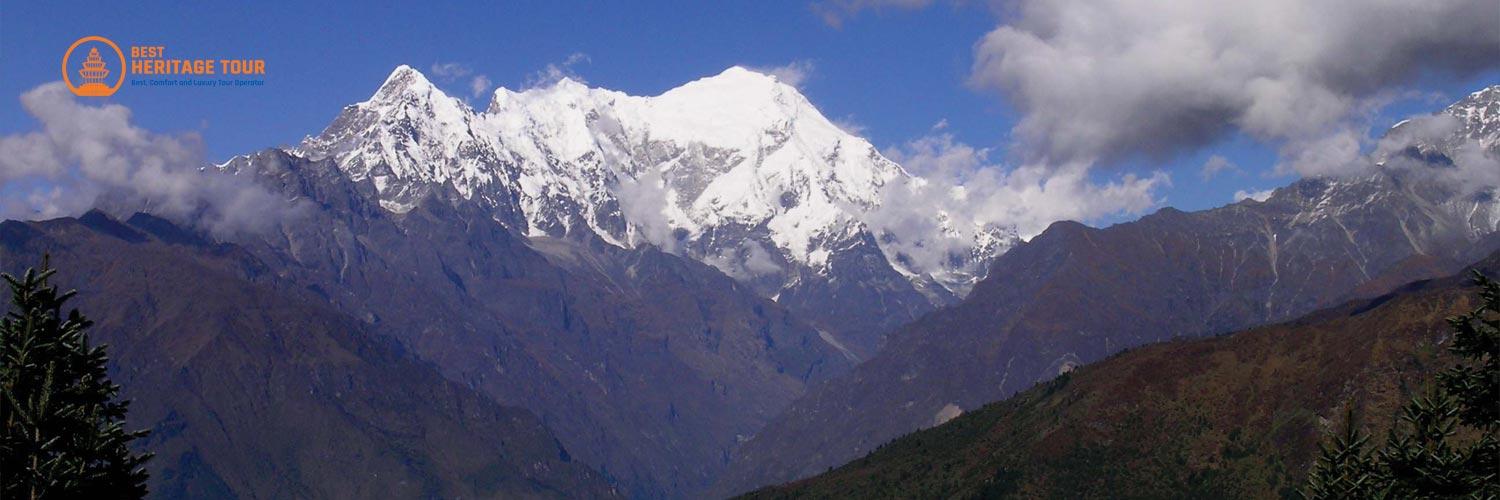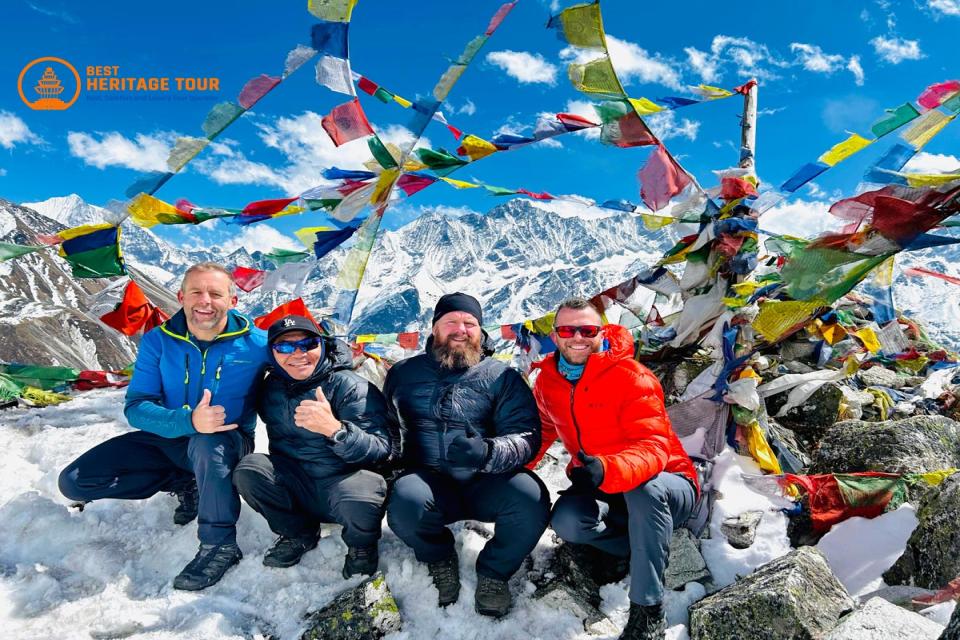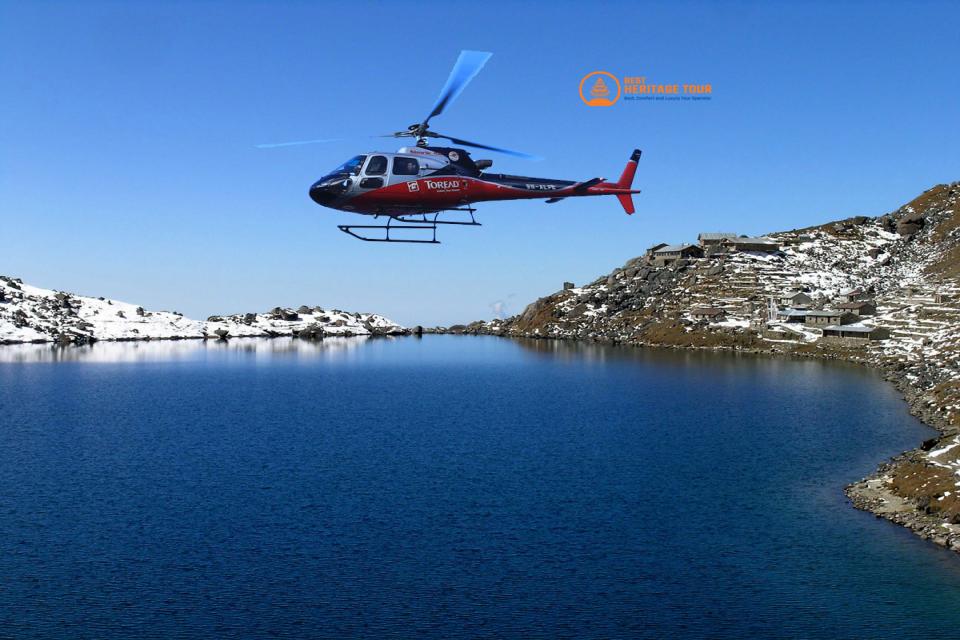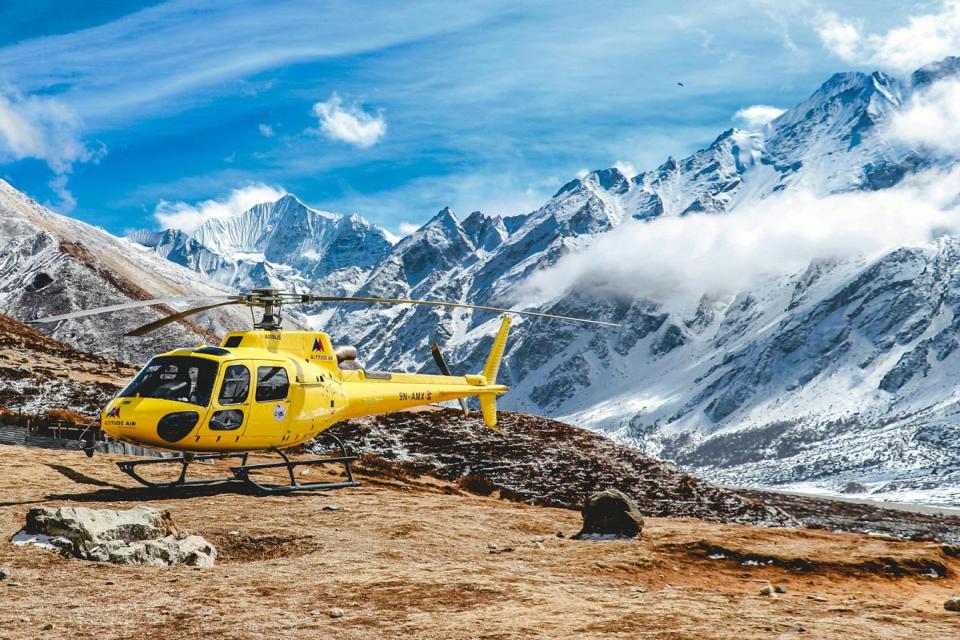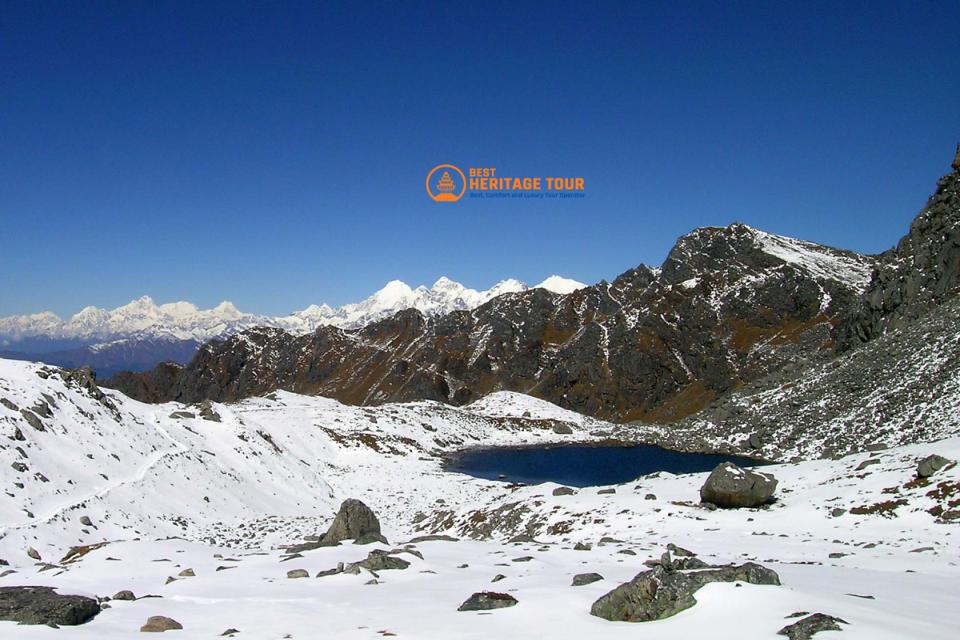Dreaming of a Himalayan adventure that blends natural beauty, spiritual depth, and cultural richness all within reach of Kathmandu? The Gosaikunda Trek 2025/2026 might just be your perfect journey. Nestled in Nepal’s Langtang Region, this high-altitude trek leads you to Gosaikunda Lake, a shimmering sacred site revered by both Hindus and Buddhists, set against a dramatic backdrop of snowy peaks and alpine landscapes.
Unlike more commercial routes like Everest or Annapurna, the Langtang Gosaikunda Trek offers a quieter, more personal connection with the Himalayas. It's a trail where every step brings you closer to ancient traditions, breathtaking views, and a profound sense of peace. Whether you're drawn by the mythological tales of Lord Shiva or simply seeking a Holy Lake Trek in Nepal that doesn’t require weeks off your schedule, this experience is as soulful as it is scenic.
In this guide, we’ll take you through everything you need to know from why this trek stands out in 2025 and 2026, to what you can expect along the route, how to prepare, and why it continues to inspire trekkers and pilgrims alike. So, lace up your boots and let’s explore why the Gosaikunda Trek in Nepal deserves a place on your adventure list.
1. Why Choose the Gosaikunda Trek in 2025/2026?
If you're planning your next Himalayan adventure and wondering why the Gosaikunda Trek 2025 or Gosaikunda Trek 2026 should be on your radar, you're in for more than just mountain views. This high-altitude journey is more than a hike, it's a soulful experience, a blend of breathtaking scenery, ancient spirituality, and raw Himalayan charm that remains one of Nepal’s best-kept trekking secrets.
A Hidden Gem in the Langtang Region
While many flock to Everest and Annapurna, the Langtang Gosaikunda Trek offers a more serene alternative. Less crowded but equally majestic, this route is ideal for those looking to reconnect with nature, culture, or even themselves.
Here’s why trekkers keep coming back:
i. Stunning Natural Diversity
-
Hike through dense pine forests, rhododendron groves, and alpine meadows.
-
Cross rivers, pass waterfalls, and ascend to glacial lakes like Gosaikunda, shimmering at 4,380 meters.
-
Get panoramic views of Langtang Lirung, Ganesh Himal, and even distant Tibetan peaks.
ii. Deep Cultural Encounters
-
Interact with Tamang and Sherpa communities whose lifestyles are deeply connected to the mountains.
-
Visit monasteries, spin prayer wheels, and listen to stories of local legends passed down through generations.
iii. A Sacred Experience
The trek’s crown jewel, Gosaikunda Lake, is not just visually stunning, it’s spiritually significant. Believed to be created by Lord Shiva himself, it attracts thousands of Hindu and Buddhist pilgrims each year, especially during the Janai Purnima festival.
Walking the trail feels like stepping into a living mythology, each step is not just a journey through space, but through time and tradition.
iv. Moderate Challenge, Maximum Reward
If you’re looking for a Holy Lake Trek in Nepal that’s accessible yet rewarding, Gosaikunda is perfect. It’s considered a moderate trek, making it a solid choice for hikers with decent fitness looking to push themselves without extreme risk.
Why Now is the Right Time
With 2025 and 2026 poised to bring a surge in interest in sustainable and spiritual tourism, now is the perfect time to book your trek before the trails get too crowded. Plus, improved infrastructure and trail maintenance make this the ideal time for a safe and immersive experience.
2. Trek Overview and Route Options
Wondering what to expect on the Gosaikunda Trek from Kathmandu or how long you’ll be on the trail? Let’s break it down. Whether you're a seasoned trekker or a first-timer eyeing a short trek in the Langtang region, the Gosaikunda route offers flexibility, stunning scenery, and a well-paced journey that balances challenge with reward.
Standard Route: Dhunche to Gosaikunda
The most popular option begins with a scenic drive from Kathmandu to Dhunche, the starting point of the trek. From there, you’ll ascend steadily over several days to reach the sacred lake of Gosaikunda.
Typical 7-Day Gosaikunda Trek Itinerary:
Day 1: Drive from Kathmandu to Dhunche (1,960m) – 6 to 7 hours
Day 2: Trek to Chandanbari (Sing Gompa) – Explore monastery and local cheese factory
Day 3: Trek to Laurebina – Start seeing views of the Langtang Himalayan range
Day 4: Trek to Gosaikunda Lake (4,380m) – Acclimatize and explore the sacred waters
Day 5: Cross Laurebina Pass (4,610m) and descend to Ghopte
Day 6: Trek to Kutumsang via forested ridgelines
Day 7: Hike to Sundarijal and drive back to Kathmandu
This route offers a perfect blend of cultural immersion, religious significance, and raw natural beauty, making it one of the most satisfying Langtang National Park treks.
Alternative Routes to Consider
If you're looking to explore more or customize your trip, you’ve got options:
-
Helambu Circuit Extension: Add an extra few days and loop through charming Helambu villages like Melamchi Gaon and Tarkeghyang. Ideal for those who want more cultural interaction and off-the-beaten-path trails.
-
Sundarijal to Gosaikunda Route: Start your trek directly from the Kathmandu Valley rim. This path offers a unique perspective, starting with Shivapuri National Park and merging with the main Gosaikunda trail.
-
Langtang Valley and Gosaikunda Trek Combo: Want the full Langtang experience? Combine the Gosaikunda trek with the Langtang Valley route for a spectacular 14–16 day adventure through glaciers, yak pastures, and sacred lakes.
What Makes This Route Special?
-
Diverse Elevation: The trail climbs from subtropical forests to alpine tundra and glaciers, offering striking ecological transitions.
-
Strategic Acclimatization: The well-paced Gosaikunda Trek itinerary 7 days, helps your body adapt to altitude safely.
-
Spiritual and Scenic Milestones: Every day brings something new from prayer flags fluttering in the wind to the emerald shimmer of glacial lakes.
It’s not just about reaching Gosaikunda, it’s about savoring every step that leads you there.
3. Key Highlights and Must-See Attractions
So, what makes the Gosaikunda Lake Trek truly unforgettable? Beyond the physical journey, it’s the trail’s spiritual depth, cultural richness, and natural grandeur that captivate every traveler who ventures into this corner of the Langtang National Park Trek.
Here are the standout experiences you absolutely don’t want to miss:
i. Gosaikunda Lake: Sacred and Stunning
At 4,380 meters, Gosaikunda Lake is the heart of the trek, both literally and spiritually. Believed to have been created by Lord Shiva’s trident to quench his thirst, this glacial lake is one of Nepal’s most revered pilgrimage sites.
-
Visit during the Janai Purnima festival (usually in August) and you’ll witness thousands of pilgrims making their way to its icy shores in a powerful display of devotion.
-
Even in the off-season, the serene, crystal-clear waters reflect snow-capped peaks, offering a meditative escape from the modern world.
You don’t just visit Gosaikunda, you feel it.
ii. Laurebina Pass: Himalayan Panorama at Its Finest
Crossing the Laurebina Pass (4,610m) is a highlight in every sense of the word. The views from this point are jaw-dropping:
-
Catch sweeping vistas of Ganesh Himal, Langtang Lirung, and even the distant Manaslu and Annapurna ranges.
-
The sunrise here is something few forget, so plan to rise early and take it all in.
iii. Chandanbari (Sing Gompa): Monastery Meets Cheese Factory
This peaceful village is more than just a resting spot on your journey. It offers:
-
A lovely Buddhist monastery where you can join evening chanting or quietly spin prayer wheels.
-
A working cheese factory where you can sample local yak cheese, a unique treat that’s part of the trekking tradition in this region.
iv. Langtang National Park: Wildlife, Flora & Fauna
As you hike, keep your eyes open for:
-
Red pandas, Himalayan thar, langurs, and colorful Himalayan monals.
-
Dense forests of pine, oak, and rhododendron that burst into color during the spring season.
The trail offers more than mountain views, it’s an ecological treasure trove.
v. Authentic Cultural Encounters
One of the most enriching parts of the Gosaikunda Pilgrimage Trek Nepal is the chance to engage with local Tamang and Sherpa communities:
-
Enjoy homestyle meals in teahouses, often cooked over a wood stove.
-
Learn about Buddhist and Bon traditions that shape the spiritual rhythm of daily life in the Himalayas.
4. Best Time to Do the Gosaikunda Trek
So, when’s the best time to experience the Gosaikunda Trek in Nepal? Great question, because your choice of season can dramatically shape your journey. Each time of year offers something unique, whether it's clear mountain vistas, vibrant festivals, or peaceful solitude. Let’s dive into what to expect season by season so you can plan your trek with confidence.
i. Spring (March to May): Rhododendron Magic & Clear Skies
If you’re after color and clarity, spring is arguably the best time for the Gosaikunda Trek.
-
Trails burst to life with blooming rhododendrons, wildflowers, and chirping birds.
-
Skies tend to be clear, offering epic views of Langtang, Ganesh Himal, and beyond.
-
Comfortable daytime temperatures make the trekking pleasant, even at high altitudes.
Pro tip: Book early, as this is a popular season for both international and domestic trekkers.
ii. Autumn (September to November): Peak Trekking Season
Autumn is the most popular time for the Gosaikunda Trek 2025 and Gosaikunda Trek 2026 and it’s easy to see why.
-
Post-monsoon freshness enhances the scenery, making mountains pop against cobalt skies.
-
Trails are dry and stable, ideal for crossing high passes like Laurebina.
-
Perfect timing to join the Gosaikunda Pilgrimage Trek Nepal if you missed the summer festivals.
Expect more fellow trekkers on the trail, but also a livelier atmosphere in teahouses.
iii. Winter (December to February): Quiet Trails, Snowy Serenity
Dreaming of solitude and snowy landscapes? You might enjoy the Gosaikunda Trek in January or February.
-
Trails are blissfully quiet, perfect for introspection and uninterrupted views.
-
Snow blankets the higher sections, turning the lake and surrounding peaks into a winter wonderland.
-
However, passes like Laurebina may be icy or closed, and not all teahouses remain open.
Only recommended for experienced trekkers or those with guides familiar with winter conditions.
iv. Monsoon (June to August): Mist, Rain & Spiritual Pilgrimage
Let’s be honest, Gosaikunda Trek in the monsoon season is not for everyone. But it has its own allure:
-
Expect lush, green trails and dramatic cloud formations.
-
Trails can be slippery and views obscured by mist.
-
However, this is when Janai Purnima takes place, drawing thousands of pilgrims to Gosaikunda Lake, creating one of Nepal’s most powerful cultural spectacles.
Want to experience the trek with a spiritual twist? This is the time.
Choosing What’s Right for You
Here’s a quick breakdown based on your priorities:
Your Goal |
Best Time to Trek |
|---|---|
|
Clear views and stable weather |
Spring or Autumn |
|
Fewer crowds, winter charm |
Winter |
|
Cultural immersion (Janai Purnima) |
August (Monsoon) |
|
Wildflowers and vibrant trails |
Spring |
5. Understanding the Gosaikunda Trek Difficulty and Preparation
Are you wondering just how tough the Gosaikunda Trek 2025 or Gosaikunda Trek 2026 really is? Knowing the trek’s difficulty level is key to preparing physically and mentally, and making sure your adventure is as rewarding as possible.
How Difficult Is the Gosaikunda Trek?
In short, the trek is considered moderate in difficulty. Here’s why:
-
The highest altitude you’ll reach is around 4,610 meters at Laurebina Pass.
-
The trail involves steady uphill climbs, with some steep sections and rocky paths.
-
You’ll be trekking for 6 to 8 hours most days, but with manageable daily elevation gains to help with acclimatization.
If you have decent fitness and some prior trekking or hiking experience, you’ll find this trek challenging but very doable.
What Physical Preparation Should You Do?
Before you hit the trail, a little training goes a long way. Here are some tips to get you trek-ready:
-
Cardiovascular Fitness:
-
Activities like jogging, cycling, or swimming will boost your stamina.
-
Aim for 30-45 minutes, 3-4 times a week.
-
-
Strength Training:
-
Focus on your legs, squats, lunges, and step-ups will prepare you for uphill climbs.
-
Don’t forget core exercises to help with balance.
-
-
Practice Hiking:
-
Try local hikes with a loaded backpack to mimic trek conditions.
-
This also helps your body get used to carrying weight.
-
-
Acclimatization Awareness: The trek’s itinerary naturally builds in acclimatization days, but staying hydrated and avoiding alcohol are also essential.
Gear Essentials for the Gosaikunda Trek
Packing smart can make or break your experience. Some must-haves include:
-
Warm, layered clothing (think thermal base layers, fleece, and a down jacket)
-
Waterproof trekking boots and rain gear
-
Trekking poles to ease your knees on steep descents
-
Sun protection- hat, sunglasses, and sunscreen
-
Basic first aid kit and personal medications
Hiring Guides and Porters: Worth It?
Many trekkers opt to hire a guide or porter for added safety and comfort:
-
Guides provide local knowledge, help with language barriers, and navigate tricky parts.
-
Porters lighten your load, allowing you to enjoy the trek more fully.
Note: Costs vary, so ask about the Gosaikunda Trek guide and porter cost when booking.
6. Gosaikunda Trek Cost and Booking Tips
Planning your budget for the Gosaikunda Trek 2025 or Gosaikunda Trek 2026? Understanding the costs upfront helps you prepare without surprises and get the best value for your adventure. Let’s break down what you can expect to spend and how to book smartly.
What Does the Gosaikunda Trek Cost Include?
Here are the main expenses to factor in:
-
Permits and Fees:
-
Langtang National Park entry permit is mandatory and affordable.
-
TIMS (Trekker’s Information Management System) card is required for safety and tracking.
-
-
Guide and Porter Costs:
-
Hiring a guide can cost between $25–$35 per day.
-
A porter typically charges $20–$30 per day, which can be a great way to ease your load.
-
These prices vary depending on the season and negotiation.
-
-
Accommodation and Food:
-
Tea houses along the trail offer basic rooms ($5–$10 per night).
-
Meals usually cost $5–$10 each, depending on your appetite and location.
-
-
Transportation: The drive from Kathmandu to Dhunche and back usually costs around $25–$35 by jeep or bus.
Estimated Total Cost Breakdown for 7-Day Trek
Expense |
Approximate Cost (USD) |
|---|---|
|
Permits & TIMS |
$30 |
|
Guide & Porter |
$300–$450 (optional) |
|
Accommodation |
$35–$70 |
|
Food |
$50–$70 |
|
Transportation |
$30 |
|
Miscellaneous |
$20–$40 |
|
Total Estimate |
$165–$655 |
How to Book Your Gosaikunda Trek
Booking your trek can be straightforward if you keep these tips in mind:
-
Book Early: Especially if trekking in peak seasons like spring and autumn, securing your guide and permits early avoids last-minute hassles.
-
Choose Reputable Agencies:
-
Look for experienced operators offering transparent pricing and local knowledge.
-
Some offer package deals including transportation, permits, guide, porter, and accommodation.
-
-
Consider Helicopter Tours for Accessibility: If you’re short on time or want a unique experience, Gosaikunda Helicopter Tour options can drop you near the lake, combining trekking and scenic flights.
-
Verify Permit Arrangements: Some agencies handle permits and TIMS for you, simplifying your prep.
-
Communicate Your Needs: If you prefer a porter, specific dietary requirements, or customized itineraries, discuss these during booking.
7. How to Reach Gosaikunda Lake and Practical Trekking Logistics
Wondering how to get started on your Gosaikunda Trek from Kathmandu and navigate the logistics smoothly? Planning the journey to the trailhead and understanding key transport and accommodation details will set you up for success before you even lace up your boots.
Getting to the Trailhead: Kathmandu to Dhunche
Your adventure officially begins with the journey from Kathmandu to Dhunche, the gateway to the Gosaikunda Trek:
-
By Jeep or Tourist Bus:
-
The 6-7 hour drive takes you north along the scenic Trishuli River valley.
-
Roads can be bumpy but offer stunning mountain and village views along the way.
-
Booking a jeep is faster and more comfortable; buses are budget-friendly but less flexible.
-
-
Private Vehicle Options: Many trekking agencies arrange private transfers, allowing for a more personalized schedule and comfort.
Starting the Trek: From Dhunche to Gosaikunda Lake
Once in Dhunche, the trekking begins in earnest. Here’s what the typical itinerary looks like for the initial days:
Day 1: Dhunche to Gatlang (or another nearby village) - easy to moderate trek through terraced fields and forests.
Day 2: Gatlang to Lauribina (base for crossing the pass) - the terrain gets steeper, but the views grow grander.
Day 3: Cross Laurebina Pass (4,610m) and descend to Gosaikunda Lake - the highest and most exhilarating day on the trek.
Accommodation & Facilities on the Trail
Don’t expect luxury, but the teahouses and lodges are warm, welcoming, and well-suited to the trekking crowd:
- Tea Houses: Simple rooms with shared bathrooms, hot showers available in some places.
- Food: Mostly local Nepali and Tibetan dishes like dal bhat, noodles, and momos.
- Electricity and Wi-Fi: Increasingly available but not guaranteed, especially at higher altitudes.
Essential Tips for a Smooth Trekking Experience
- Altitude Adjustment: Spend your first night at Dhunche or a similar altitude village to help acclimatize.
- Cash is King: ATMs are scarce beyond Kathmandu, so carry sufficient Nepali rupees for permits, food, and lodging.
- Weather Prep: Pack layers and rain gear, as mountain weather can change fast.
- Respect Local Customs: The region is rich in culture; a friendly greeting and respect for religious sites go a long way.
Returning from Gosaikunda
After soaking in the spiritual calm of the lake, you’ll retrace your steps back to Dhunche or extend your trek toward the Langtang Valley for a combined experience.
Conclusion
As you wrap up your planning for the Gosaikunda Trek 2025 or Gosaikunda Trek 2026, have you thought about what this journey will truly mean for you? Beyond the stunning alpine lakes, sweeping mountain vistas, and the spiritual aura of the Gosaikunda Pilgrimage Trek Nepal, this adventure offers a chance to connect deeply with nature, culture, and yourself.
Whether you choose to trek during the vibrant spring blooms, the crisp autumn air, or the quiet winter snow, the Langtang Gosaikunda Trek promises an unforgettable experience. By understanding the trek’s difficulty, preparing adequately, and planning your itinerary and budget wisely, you’re setting yourself up for success and enjoyment every step of the way.
Have questions about the best time for your trek, or wondering how to navigate permits and local logistics? Remember, thorough preparation is key, but so is embracing the unexpected joys the trail brings. The majestic Gosaikunda Lake Trek is not just a hike; it’s a journey through Nepal’s rich heritage and breathtaking landscapes.
Ready to make your dream trek a reality? Trust Best Heritage Tour, a leading tour operator specializing in unforgettable Nepal adventures. With expert guides, personalized itineraries, and seamless support, they’ll help you explore the magic of Gosaikunda with confidence and ease.
Contact Us Today for Bookings & Information:
- Phone/WhatsApp/Viber: +9779851149197 / +9779810043046
- Website: www.bestheritagetour.com
- Location: Thamel Marg, Kathmandu, Nepal
Author: Best Heritage Tour
Date: 23rd May, 2025

